how boro has been used
Here are presentations and papers describing some of the boro projects:
| Air Control Means ONTOBRAS 2013 | |
| This tutorial provides an illustrative case study of how the BORO methodology has been used to improve precision. The case study looks at work done on the ontology of 'Air Control Means' a construct used in military air traffic control as part of a wider air defence ontology. It has these ontological themes; semantic vagueness, rational reconstruction, increased precision, shift from a pen and paper paradigm, fruitfulness.
This is part of a series of tutorials that walk through examples that illustrate how the BORO methodology has been used to re-engineer data in an industrial context. | |
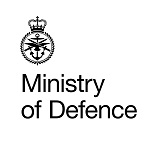 | |
| An Analysis of Services | |
| The goal of this report is to provide an in-depth common conceptual understanding of services end-to-end across the enterprise – one that encompasses business, IT and technical services and gives a picture of what, in essence, a service is. | |
 | |
| Enterprise Data Modelling FOMI 2006 | |
| This paper examines the development of a conceptual model that defines Shell’s information requirements - the Downstream Data Model (DDM). The model has its roots in a framework based on the notion of ontological commitment and the focus of the analysis seeks to provide useful insights into the metaphysical aspects relevant to the creation and deployment of the DDM – primarily that related to the extensional nature of the model. The impact of this choice and the methodology employed in the production of the model is examined through example patterns covering spatial and temporal dissectiveness and the use of powerclasses. Having been through the experience of conceptual model development, the work concludes that the separation of the implementational and epistemological ‘gloss’ from a studied understanding of ontological commitment is a necessary evolution of practice in conceptual modelling. | |
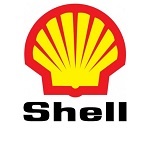 | |
| Introduction to MODEM | |
| Describes the MODEM framework under development - the building of a Semantic Foundation for EA by reengineering the MODAF™ Meta-Model Based on the IDEAS Foundation Model. | |
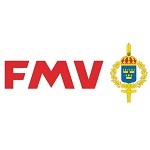  | |
| MOD Ontology | |
| A presentation on the MOD Ontology. Topics covered: MOD Ontology Team, Background on MOD Ontology (Why we started it – What it’s founded on – IDEAS), The BORO Method, The MOD Ontology Demonstrator. | |
.jpg)  | |
| MODEM Behaviour | |
| This walks through a project where the BORO methodology was used to re-engineer data in a defence architectural framework standard - MODAF. This standard has a UML metamodel. UML has (to an extent) a formal semantics, but was not designed to provide a real world semantics. Hence, MODAF at the start had no top level real world semantics, though it had started to establish middle level real world semantics, within UML’s top level formal semantics. This presentation explaines how MODEM used IDEAS (BORO) to bring the real world semantics in. This includes a detailed study of the improvements needed to the UML model for behaviour.
This is part of a series of tutorials that walk through examples that illustrate how the BORO methodology has been used to re-engineer data in an industrial context. | |
 | |
| NORSOK SCCS ONTOBRAS 2013 | |
| This tutorial provides an illustrative example of how the BORO methodology has been used to re-engineer and improve ‘structural constraints’ in existing frameworks. It provides a nice example of how an ontological analysis can reveal the constraints and identify how they can be improved. The case study is taken from a project that developed a common data foundation for an oil and gas enterprise. One area under analysis was cost management. The starting point for the analysis was the NORSOK Z-014 Standard cost coding system. The tutorial looks at its the structural constraints were identified and remedied.
This is part of a series of tutorials that walk through examples that illustrate how the BORO methodology has been used to re-engineer data in an industrial context. | |
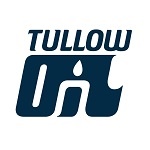 | |
| NORSOK Z014 AACE 2015 | |
| One reason oil and gas companies adopt a standard cost coding system is to facilitate benchmarking. NORSOK Z-014 Standard Cost Coding System (SCCS) is an example of this kind of system. This paper describes a set of issues found in a project that attempted to adopt this standard. These were issues whose analysis revealed problems with the standard’s fundamental structure. Further analysis showed that these types of problems are well understood outside the project controls community and resolvable using a classification technique technically known as ‘facets’. The paper provides examples of these issues and indicates how they can be resolved. It also describes the systematic modernization approach adopted by the project to resolve the issues throughout the standard. The aim of this paper is to introduce to the project controls community an understanding of the importance of these issues for raising the quality of their data and the new techniques to provide improved foundations for standard cost coding systems for the oil and gas industry in the 21st Century. | |
 | |
| Novel Ontological Semantic Interoperability | |
| In common with many other government defence departments, the UK Ministry of Defence (MoD) has realised that it has a plethora of legacy systems that were procured as domain specific with little emphasis given to integration requirements. In particular, it realised that the lack of integration between a significant number of the legacy air defence command and control (AD-C2) systems meant it could not deliver the increased agility needed for joint force AD and that current approaches to integration were unlikely to resolve the problem. They realised that they needed a new approach that demonstrably worked. This paper describes a programme initiated by the MoD to address this problem through the formulation of a novel solution and its demonstration in the tactical AD-C2 environment using a sample of these existing legacy systems. It describes the ontological solution deployed to resolve the 'hard' semantic interoperability challenge. It outlines the physical and semantic architecture that was developed to support this approach and describes the implemented planning and collaborative execution (PACE-based) and semantic interoperability engine (SIE) solution. | |
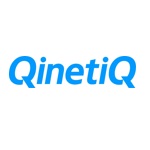  | |
| Robust Common Master Data Foundation Oil Gas | |
| The Upstream Oil and Gas industry is formed of a complex network of contractual structures, highly specialised technical disciplines and technologies that interact across multilateral supply chains for exploration and production of hydrocarbons. The complexity comes with a number of technical, social and environmental risks may affect entire regions and countries. One of the key challenges that organisations face in this industry, is ensuring interoperability across organisational and functional boundaries due to the highly stratified supply chain and deeply specialised technical domains that it creates. This presentation will describe the strategy used to build a robust common foundation for the data; at the centre of which is a stable and resilient data architecture for the oil industry. It will explain how this was achieved including the use of structured foundational design principles and industry data standards including ISO 15926, IDEAS and MODEM.
| |
 | |
| Semantic Modernisation | |
| There is a well understood requirement for semantic interoperability within NATO and an emerging strategy to address it. One of the strategy’s key components – the ‘semantic description’ – requires further clarification. What is less well recognised is that this ‘semantic description’ can also be viewed as a component of a wider strategic requirement for semantic modernisation. This paper describes how the semantic modernisation techniques of layering and harvesting provide a strong foundation for the production of semantic descriptions. It describes two projects that illustrate how these techniques are being used to do this. Finally, it reflects upon how this could help to refine the current NATO NEC (NNEC) semantic interoperability strategy. | |
 .jpg) | |
| Successful Strategy Network Enabled Capability | |
| Responsive, agile, collaborative planning and execution is a key requirement for the development of a successful Network Enabled Capability (NEC), whether at the national or international level. This paper makes the case that it is not possible to achieve this agility without solving the semantic interoperability problem. The semantic issues facing NATO’s Network Enabled Capability (NNEC) are also faced by its members in their national NECs. There are currently many proposed strategies attempting to address these issues. Finding the one that will provide the hoped for integration and at the same time only cause minimal changes to existing infrastructure is a major challenge. In this situation it is vital to be able to demonstrate the effectiveness of a strategy. This paper presents the findings from a project tasked with both identifying a strategy and demonstrating its effectiveness - the Joint Tactical Air Defence Integration System (JTADIS) project. This project was funded by the UK Ministry of Defence (MoD) and undertaken by QinetiQ – the semantic analysis was undertaken by BORO Solutions. | |
 .jpg)  | |
| Tullows master data | |
| BORO Solutions applies military-strength semantics in 'Clean' and 'Pure' approach to complex oil country data landscape. Industrial ontology leverages Department of defense framework. | |
 |
Legend
